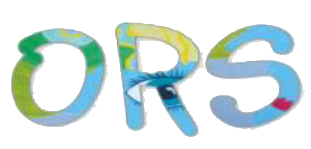Schulordnung der Ostertag - Realschule
Ich stehe hinter dem Leitbild unserer Schule und werde …
… freundlich sein durch Höflichkeit und Hilfsbereitschaft
• Ich grüße, wenn mir jemand begegnet oder wenn ich einen Raum betrete.
• Ich rede so, dass keiner beleidigt, verletzt oder herabgesetzt wird, denn so beginnt Mobbing. Wenn ich so etwas beobachte, bin ich mutig und sage es dem Vertrauens- oder Klassenlehrer.
• Ich entschuldige mich, wenn ich mich falsch verhalten habe.
• Ich biete meine Hilfe an, wenn ich jemanden unterstützen kann.
• Ich höre zu und lasse andere ausreden.
… friedlich sein durch Offenheit, Ehrlichkeit und Rücksichtnahme
• Ich verzichte auf Gewalt oder Beleidigungen gegenüber Mitschüler/innen und versuche, Konflikte durch Gespräche zu lösen.
• Ich respektiere meine Mitschüler/innen und akzeptiere andere Meinungen.
• Ich grenze niemanden aus.
• Ich stehe zu Fehlern, die ich mache, und versuche nicht, mich herauszureden oder andere zu beschuldigen.
• Ich verhalte mich in der Schule so, dass keine Personen zu Schaden kommen. Deshalb werfe ich zum Beispiel auch keine Schneebälle oder Ähnliches.
• Ich unterlasse alles, was die Mitschüler/innen an ihren Lernfortschritten hindert.
• Ich lasse Handy, MP3-Player etc. ausgeschaltet in der Tasche, denn die Beschäftigung damit reduziert nachweislich Aufmerksamkeit und Aufnahmefähigkeit. Die Nutzung auf dem Schulgelände ist streng verboten.
• Ich respektiere uneingeschränkt, dass das Fotografieren und Filmen auf dem Schulgelände verboten ist. Ausnahmen erteilt der Lehrer.
• Ich rauche nicht und trinke keinen Alkohol auf dem Schulgelände und das nicht nur, weil es verboten ist und der Gesundheit schadet, sondern weil ich jüngeren Schülern kein schlechtes Vorbild sein will.
… verlässlich sein durch Sauberkeit, Ordnung und Pünktlichkeit
• Ich werfe Abfälle immer in den Mülleimer und hebe auch freiwillig etwas auf, was nicht von mir
stammt, damit wir in einer sauberen Umgebung arbeiten können.
• Ich stelle Stühle oder Tische, die ich benutzt habe, wieder an ihren Platz zurück – auch im Foyer – und stuhle nach der letzten Stunde im Klassenzimmer auf.
• Ich bemale und beschädige keine Tische, Wände oder andere Gegenstände, denn die Instandhaltung kostet viel Geld, das dann an anderer Stelle der Schule fehlt.
• Ich gehe mit den mir überlassenen Schulbüchern und Materialien sorgsam um, sonst muss ich sie ersetzen.
• Ich kaue auf dem gesamten Schulgelände keinen Kaugummi.
• Ich habe mir angewöhnt, zum Unterricht und zu allen schulischen Veranstaltungen pünktlich zu erscheinen, denn im späteren Berufsleben wird Pünktlichkeit von mir ganz selbstverständlich erwartet.
• Ich kleide mich so, dass andere nicht vom Unterricht abgelenkt werden oder sich diskriminiert bzw. beleidigt fühlen müssen. Bei Betreten des Schulhauses nehme ich aus Höflichkeit die Kopfbedeckung ab. Ausnahmen erteilt die Schulleitung.
• Ich halte mich an das Verbot, das Schulgelände während der Schulzeit zu verlassen.
• Ich selbst bin dafür verantwortlich, mich über Unterrichtsstoff und entsprechende (Haus-)Aufga-
ben kundig zu machen, wenn ich Unterricht versäumt habe. Ich hole alles zügig nach.
• Ich weiß, dass Klassenarbeiten langfristig (mindestens 1 Woche vorher) angekündigt werden. Wenn ich am fälligen Termin fehle und kürzer als 4 Tage krank bin, muss ich damit rechnen, dass ich die Arbeit sofort nachschreiben muss. Zur Erinnerung: Bei Erkrankung müssen meine Eltern die Schule telefonisch informieren und am 3. Tag eine schriftliche Entschuldigung vorlegen.
Ich halte mich an die in der Haus- und meiner Klassenordnung formulierten Regeln und weiß,
dass gegen mich Erziehungs- und Ordnungsmaßnahmen getroffen werden, wenn ich durch
mein Verhalten die Arbeit und das Zusammenleben in der Schule störe.
Erziehungs- und Ordnungsmaßnahmen können unter anderem sein:
• Eintrag ins Klassenbuch
• Nachsitzen – immer freitags am Nachmittag
• Ausgleichsaktivitäten
• Schulleiterarrest
• Ausschluss von Klassenfahrten und außerschulischen Aktivitäten
• Ausschluss vom Unterricht
• Einzug von Handys oder Ähnlichem – Erziehungsberechtigte können die Geräte im Sekretariat abholen
(Beschluss der Schulkonferenz)
